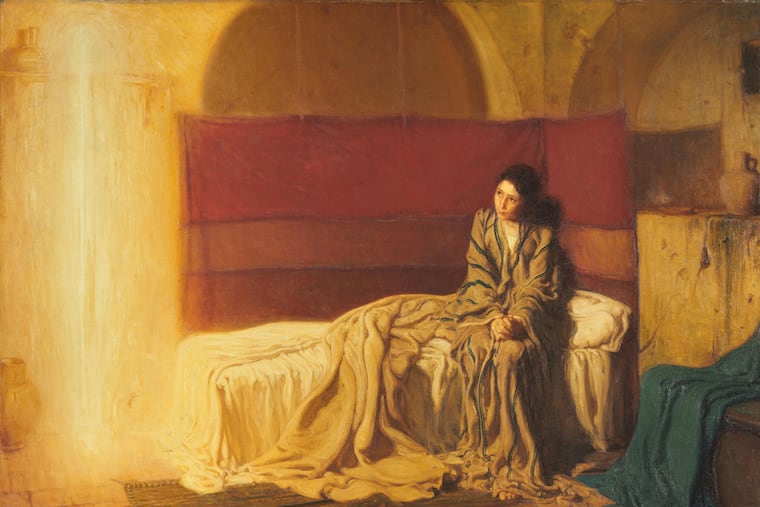Henry Tanner is a key part of Philly’s history. Don’t let his home be destroyed.
As one of the greatest artists the city has produced, Tanner is someone Philadelphia deserves to be proud of, and his memory must be preserved. Starting with his family home in Strawberry Mansion.

Philadelphia is a city rich with history, but too often we have allowed the spaces where that history took place to waste away. When that happens, we risk losing the stories of the past that gave those places their importance, and what those historical lessons can inform our present and future. Losing that connection is what is at stake for the Henry Ossawa Tanner house in Strawberry Mansion.
Tanner is one of the city’s greatest artists. He was also one of the first African American artists to become internationally recognized. He is someone Philadelphia deserves to be proud of, and his memory must be preserved.
That preservation effort should start with his family home.
As home to generations of the Tanner family, 2908 W. Diamond St. once was referenced by eminent scholar and historian Carter G. Woodson “as the center of the Black intellectual community in Philadelphia.” The Tanner family is part of a Philadelphia lineage that helped to mold areas of law, medicine, civil rights, public service, theology, education — and, for our purposes, the arts.
The house has been designated a National Historic Landmark but is currently empty and falling into disrepair. If nothing is done, the building may become unsafe and need to be torn down.
» READ MORE: Once ‘the center of the Black intellectual community in Philadelphia,’ the Henry O. Tanner House could be demolished
This would be a great disservice to the legacy of Henry O. Tanner, whose work is foundational to the collections of two of the city’s great museums, the Philadelphia Museum of Art and the Pennsylvania Academy of the Fine Arts. And as leaders of the Philadelphia Museum of Art’s African American Collections Committee, we felt it our responsibility to highlight what Tanner has meant to our institution and the city’s cultural landscape — and underscore the critical call to action to help preserve this home of historic importance.
Born in Pittsburgh and educated in Philadelphia, Tanner studied painting under Thomas Eakins at the Pennsylvania Academy of the Fine Arts from 1879 to 1885. He later moved to Paris because he felt he could not fight racism and be an artist at the same time. There, he painted and displayed his seminal work, The Annunciation, which was purchased by the Philadelphia Museum of Art in 1899. This was the first painting by Tanner to enter an American museum, and was one of the most significant events in the development of the museum’s collection.
“The Tanner house in Strawberry Mansion is important for more than just art.”
The museum would go on to collect more works by Tanner, including Portrait of the Artist’s Mother, which was passed to the museum by descendants of the Tanner family.
For more than a century, Tanner has served as the foundation for the African American legacy at the Philadelphia Museum of Art. That legacy encompasses not only hundreds of artists but also the lead architect of the museum’s iconic Main Building, Julian Abele, and our committee’s founder, Constance E. Clayton, the first African American and first woman to serve as the superintendent of the School District of Philadelphia.
As our committee’s mission is to steward this great collection, advocate for its continued growth, and preserve and share the consequential narrative of African American contributions to the museum, the state of the Tanner house demands our attention. The Tanner connection is far from tangential or abstract to our work; his grandniece, Rae Alexander-Minter, is a member of our committee.
But the Tanner house in Strawberry Mansion is important for more than just art. Tanner’s father, Benjamin, was a newspaper editor who wrote about conditions for Black people after the Civil War and likely met with Frederick Douglass and other prominent figures; Booker T. Washington went to the house to discuss the day’s issues.
We fully support the campaign to save and restore the Tanner family home. The museum is donating a portion of the profits from the sale of products featuring Tanner’s work to the campaign.
We are committed to continuing to encourage every Philadelphian to visit the museum to experience Tanner’s artistic achievements, draw upon them for inspiration, and take pride in the important role that he played in our shared cultural heritage. While those gifts are cherished globally (and rightfully so), we can do more to recognize and celebrate them locally. We invite you to join our efforts in this cause.
Darryl J. Ford and Nia Ngina Meeks are the chair and vice chair, respectively, of the African American Collections Committee at the Philadelphia Museum of Art.